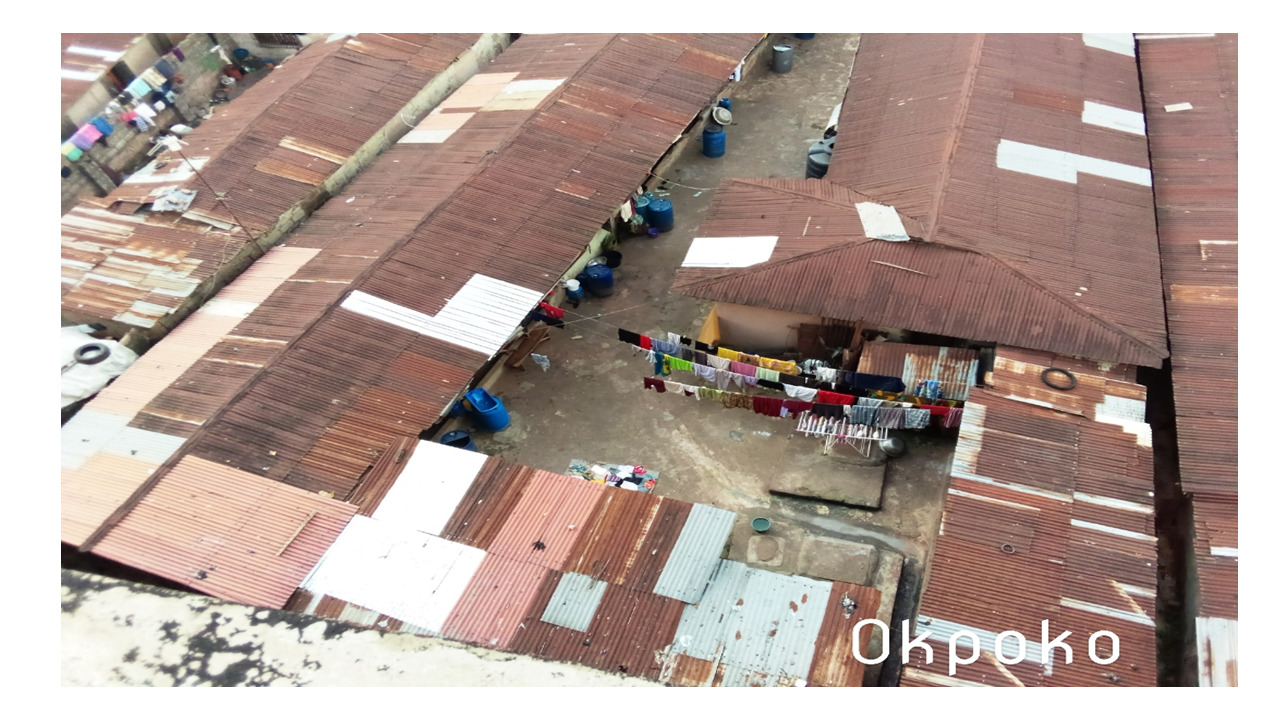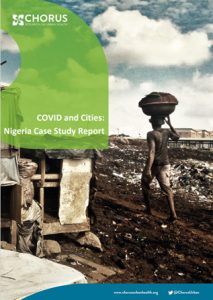
Covid & Cities Blog – 4th in the series: Reflections on the government response to COVID-19 in Nigeria’s urban context, and thoughts for future pandemic responses
by Prince Agwu, Chinyere Mbachu and Obinna Onwujekwe, Health Policy Research Group, University of Nigeria, Nsukka
Background
Nigeria’s urban population growth rate is currently estimated at 4.1%, and the urban population is expected to double by over 200m by 2050. A burgeoning urban population could be regarded as both advantageous and disadvantageous, considering the increase in human resources, as well as the competition for scarce resources. Therefore, while population increase appears difficult to control in Nigeria, growing governance capacity to manage such increase is the most viable alternative.
Despite Nigeria’s National Urban Development Policy (2012), scholars have argued that there are no clear-cut strategies to guide urban development in the country, and specifically there is the lack of plans for urban health. Over 52% of Nigeria’s urban population live in slums and over 80% of the country’s employment population derive their livelihood from the informal sector. With increasing poverty in Nigeria, the majority of Nigeria’s urban population live on the edge, and without access to quality health services, good housing, and other basic amenities. Not much of a surprise that urban centres in Nigeria contributed significantly to COVID-19 cases.
The COVID-19 pandemic and the consequences of its control measures exacerbated the humanitarian and economic crisis already being faced by Nigeria’s urban population. Our blog examines the nexus between the governance structures that were established for COVID-19 response and the experiences of urban populations during the pandemic.

As a part of the Community-led Responsive and Effective Urban Health Systems (CHORUS), we conducted a review of literature on responses of national and subnational governments to COVID-19 across urban areas in Nigeria. Although, we paid particular attention to Enugu and Onitsha as priority locations for the CHORUS project. Our findings target the improvement of responses to disease outbreaks in urban regions, and the country at large.
Our information collection strategy
We retrieved and reviewed 173 scientific publications, media reports, and documentations by relevant agencies within the disease control community in Nigeria.
What did governance look like in managing COVID-19 in urban areas?
Nigeria is divided into three tiers of governance, which are the federal, state, and local governments. On health issues, all three tiers share the responsibilities. However, given that COVID-19 pandemic was declared a public health emergency, it necessitated a more centralised coordination, which was built around the federal government, but with the sub-national levels (states and LGAs) participating in various ways.
The overall body that was tasked with the coordination of COVID-19 control strategies was established by the Federal Government of Nigeria and was initially called the Presidential Taskforce on COVID-19 response (PTF). However, its name was later changed to the Presidential Steering Committee on COVID-19 (PSC) in March 2021. The efforts of Ministries and agencies in health, social development and humanitarian affairs, finance, information, education, etc., at both federal and state levels were coordinated by the PTF. Additionally, roles by non-state actors and the private sector were also profound and coordinated by the PTF as well. The PTF provided daily updates on COVID-19 and made reviews of the various coordination and containment strategies.
Under the supervision of the PTF, funds were disbursed to NCDC and Emergency Operations Centres at federal and state levels for undertaking health and relief responses against COVID-19. The private sector under the Coalition against COVID-19 (CACOVID), including international governments and development organisations like the World Bank, made donations to the Federal Government, and a few to some state governments.
The federal government made special budgetary arrangements for health by instituting special COVID-19 funds. While it is difficult to track the exact amount of money that was mobilized and used, estimates suggest that over £275m went into combatting COVID-19 in Nigeria. These funds were targeted at basically improving testing and tracing, establishing isolation centres, revamping health facilities, and providing relief to cushion the economic impacts of COVID-19. In all, despite significant contribution to COVID-19 cases from the urban centres, we found the absence of specific urban governance approach to COVID-19, as strategies appeared too generic.
How did urban residents fare amidst COVID-19?
As well-known, the entry port through which COVID-19 came to Nigeria is located at the country’s commercial nerve-center, and one of the most populous cities on the globe – Lagos. As more persons came into the country through Lagos and Abuja, where Nigeria’s busiest airports are located, both places rose to the epicentres of the virus. Usually, travelers who first arrived in Lagos or Abuja will journey to other parts of Nigeria, often making stops at the urban centres in the states where they are domiciled, and inadvertently contributing to the spread of the virus in those cities.
With over a month of the first confirmed case of COVID-19 in Nigeria, a nationwide lockdown commenced. The implication of this was that while formal workers could transition to virtual workspaces with their wages intact, informal workers who account for the vast majority of employed Nigerians had their means of livelihoods constrained. This contributed to the growing unemployment rate in Nigeria, and “hunger” emerged as a crisis that competed with the pandemic.
Federal and state governments made citizens believe that plans had been made to put hunger in check, which was quite true, given multiple donations made to the government. On the contrary, hunger as an effect of the pandemic appeared to have been handled poorly. First, weak indicators were adopted to determine the poor, as Nigerians questioned the enlistment of poor persons in the national social register; second, skewed relief distribution was observed as the Ministry of Humanitarian Affairs claimed to have shared N52b ($124.9m) in 10 days to the poor and fed school pupils at their homes with over N500m ($1.2m); the climax was the hoarding of food palliatives that were massively looted by urban residents after lockdown was eased.
For most urban residents, defeating the economic impacts of the virus was more important to them than staying safe against the virus. Consequentially, urban residents resorted to breaking the safety rules, either by paying bribes to security operatives to allow them to commute to do their businesses, or open their businesses once it was dark, or pretend to keep the rules only when security operatives were around them. Police brutality in urban centres increased rapidly in the guise of enforcing COVID-19 safety measures, and sometimes, as reactions to citizens who refuse to be extorted. There was also an increase in violence against women who were in lockdown with abusive male partners.
In slums and other informal settlements, safety measures were non-existent, owing to crowded living arrangements, and the lack of basic handwashing amenities, such as clean water. The lack of resources to afford hand sanitisers and facemasks whose prices became outrageous during the peak of the virus was a challenge in informal settlements.
These were compounded by the lack of specific addresses for houses in urban slums that make contact tracing impossible and lack of basic amenities and informational resources. The dearth of quality and affordable health services in such areas was also a challenge. Based on these risk features, Nigerian slums were tagged as a cesspool for COVID-19, since they lacked the basic minimum for safety against the spread of the virus.
What should be done going forward?
First, minimal involvement of grassroots leadership like the traditional institutions, community-based and vulnerable groups in developing the containment strategies was a problem. This same challenge reportedly limited the success against Ebola in DR Congo. Disease management governance in Nigeria must consider the need to blend vertical and horizontal approaches.
Second, urban health must become a priority in government’s agenda. It is vital that health facilities and services in informal settlements are revamped and strengthened, perhaps with the training and integration of informal health providers. This can be done alongside a clear strategy for the upgrade of these informal settlements. Securing the details of dwellers of informal settlements is also needful and can be achieved through the local governments and wards.
Additionally, it is important to establish lucid and scientifically backed eligibility criteria and procedures for the inclusion of persons into the social register that profiles the poor in Nigeria. This is necessary to build trust in the country’s humanitarian and social development system.
Meanwhile, non-state actors and the private sector should pursue accountability from the government whenever they make donations. It is possible to achieve this by demanding for regularly updated online portal that publishes all details of donated and spent resources. This will help with resource tracking, organisation of donations, and prevention of unwarranted duplicity of charities.
Finally, the multi-sectoral approach to COVID-19 has shown the towering need of the full implementation of health in all policies (HiAP) in Nigeria. Ministries and agencies should be encouraged to mainstream health emergency responses into their scope of operations.
Conclusion
Nigeria’s urban population is expected to skyrocket in the coming years, and pandemics other than COVID-19 are likely to surface in future. Urban centres appear to be more at risk, owing to a large and increasing population that compete for scarce resources. Urban development and governance are becoming topical in Nigeria, and in particular, urban health, but they are yet to become a priority for national and subnational governments. Lessons from COVID-19 have further shown the need to enhance the scope and capacity of governance to manage fast-growing urban populations, and efficiently respond to their health, economic, and security needs. Therefore, we basically recommend: (a) improved grassroots involvement in designing pandemic response strategies (b) prioritization of urban health and urban renewal (c) liaising with local authorities for data capturing of dwellers of informal settlements (d) transparent and evidence-backed processes in enlisting the poor in the social register (e) non-state actors and the private sector should hold government to accountability of resources, and (f) HiAP should be promoted across ministries and agencies.
Photo by HPRG, University of Nigeria